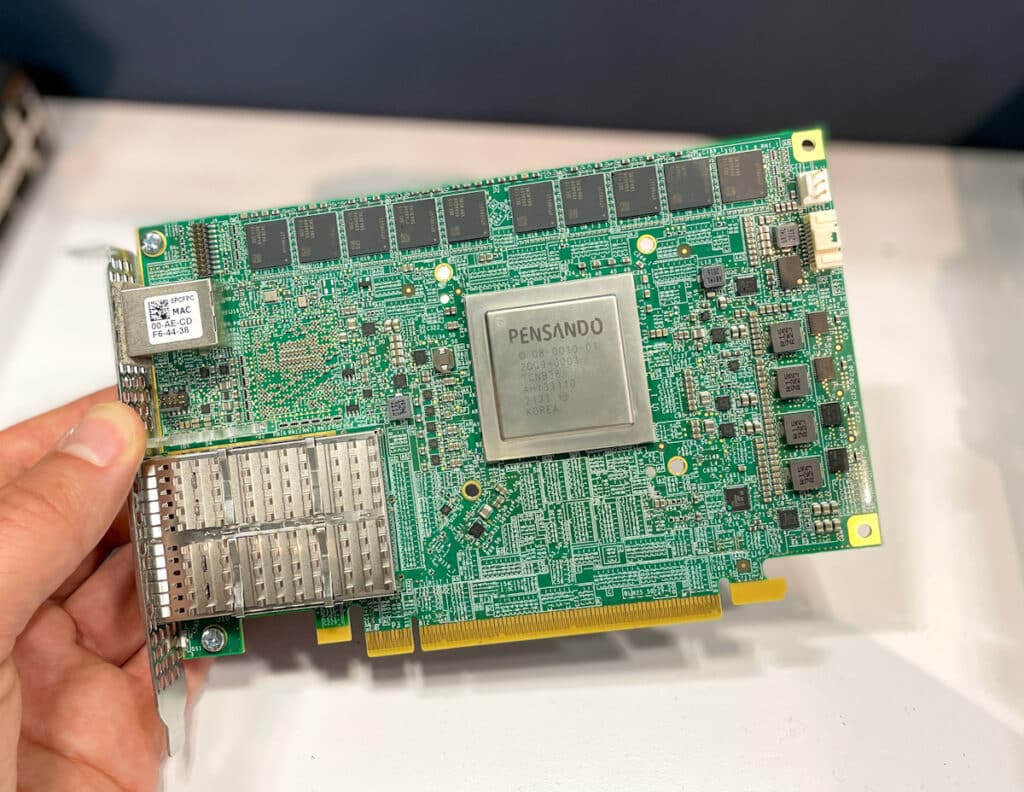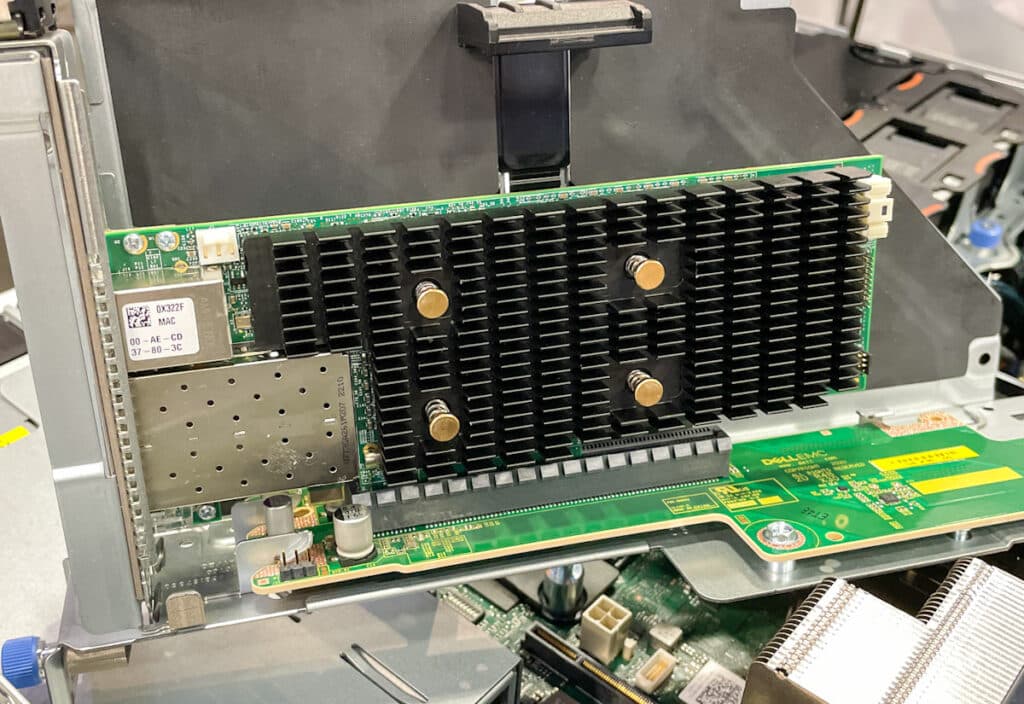The AMD Pensando Distributed Services Card is one of the first DPU solutions to support VMware vSphere 8 and will be available from leading server vendors, including Dell Technologies and HPE. The AMD Pensando DPU is deployed at scale across hyperscalers, cloud service providers, and enterprises.
AMD announced that the AMD Pensando Distributed Services Card is one of the first DPU solutions to support VMware vSphere 8 and will be available from leading server vendors, including Dell Technologies and HPE. The AMD Pensando DPU is deployed at scale across hyperscalers, cloud service providers, and enterprises.
DPU technology has gained traction in the data center, with several new players in the market offering various service options. The AMD DPU is based on a 7nm process supporting 400G throughput, placing it at least a generation ahead of the competition.

The increased interest in DPUs is due to the increasing scale and sophistication of data center applications and the demand it puts on infrastructure services and crucial CPU resources. One way to address the performance issue is to modernize the data center by implementing data processing units (DPUs) to offload infrastructure services from the CPU.
AMD Pensando DPU and VMware
VMware’s vSphere 8 reimagines IT infrastructure as a composable architecture with distributed services at the server edge. Taking a page from the hyperscalers successes, vSphere 8 moves essential infrastructure functions like networking, storage, security, and host management services from the main server CPU and shifts them to the DPU.
Using DPU hardware like the AMD Pensando Distributed Services Card, server resources are freed up, and the distributed services can be accelerated. Now, enterprises can apply this architecture to bare-metal hosted services and virtualized environments to unify workload management and improve TCO.

The fully programmable AMD Pensando DPU is at the core of this shift toward software-defined infrastructure. The VMware vSphere Distributed Services Engine and AMD Pensando DPUs can help customers reduce operational costs by unifying workload management, improving performance by freeing up CPU resources, and providing an added layer of security by isolating infrastructure services from server tenant workloads. Early customers of vSphere Distributed Services Engine, accelerated by AMD Pensando DPUs, include a leading financial services provider, a multi-cloud solutions hoster, and a leading business applications company.
AMD’s Forrest Norrod, senior vice president, and general manager, Data Center Solutions Group, explained it this way:
“Performance, efficiency, and security are integral components of competitive offerings within cloud computing and hyperconverged infrastructure. VMware vSphere 8, running on AMD Pensando DPUs, is a key step in bringing the industry closer to composable hardware systems and truly pervasive heterogeneous computing. AMD is uniquely positioned in the industry to deliver performance, efficiency, and security with a distributed services platform currently deployed with major customers including Goldman Sachs, Microsoft Azure, NetApp, IBM Cloud, and Oracle Cloud.”
VMware’s Krish Prasad, senior vice president, and general manager, VMware Cloud Platform Business, added:
“Modern applications are driving workload-specific requirements into the infrastructure. This has led to the need to reimagine data center architecture with mainstream support for accelerators such as DPUs. With combined solutions featuring VMware vSphere 8 with Distributed Services Engine capabilities and AMD Pensando DPUs and EPYC CPUs, customers can improve infrastructure performance, boost infrastructure security and support the evolution of cloud infrastructure for modern applications.”
Dell Technologies announced the launch of SmartDPU Software Solutions on the VxRail platform with a choice of DPUs from AMD Pensando and NVIDIA. HPE announced the launch of HPE ProLiant with VMware vSphere Distributed Services Engine based on DPUs from AMD Pensando. VMware reported rapid progress from other partners like Lenovo and Intel, bringing more solutions to the market and providing more choices.
Hardware specifications
| Form Factor | Full-height, Half-length PCIe |
| PCIe Interface | 16-lane PCIe Gen4.0 |
| Network Ports | 2 ports QSFP56 |
| Port Configurations | 2×50/100/200G, 4×50/100G |
| Management Ports | 1x RJ45 100M/1G Ethernet |
| Indicators | Port activity and link |
| Power | 55-66W typical |
| Cooling | Passive heatsink |
| Airflow | 300 lfm airflow with DAC interface |
| Temperature (°C) | 0 to 50 (Operational) -40 to 70 (Non-Operational) |
| Humidity | 5 – 95% Relative |
| MTBF (Hours) | 585,000 |
VMware also introduced several new features to vSphere 8 delivering the AMD Infinity Guard set of features, including the AMD Secure Encrypted Virtualization (SEV) and Secure Encrypted Virtualization – Encrypted State (SEV-ES) advanced technology features of AMD EPYC processors. AMD EPYC processors continue to offer high performance for traditional and next-gen workloads on VMware HCI powered by vSAN 8.
VMware vSphere 8 solutions from Dell Technologies and HPE, accelerated by AMD Pensando DPU, will be available in the coming months. AMD EPYC processor support for VMware vSphere 8 will be available upon launch.
Engage with StorageReview
Newsletter | YouTube | Podcast iTunes/Spotify | Instagram | Twitter | TikTok | RSS Feed

